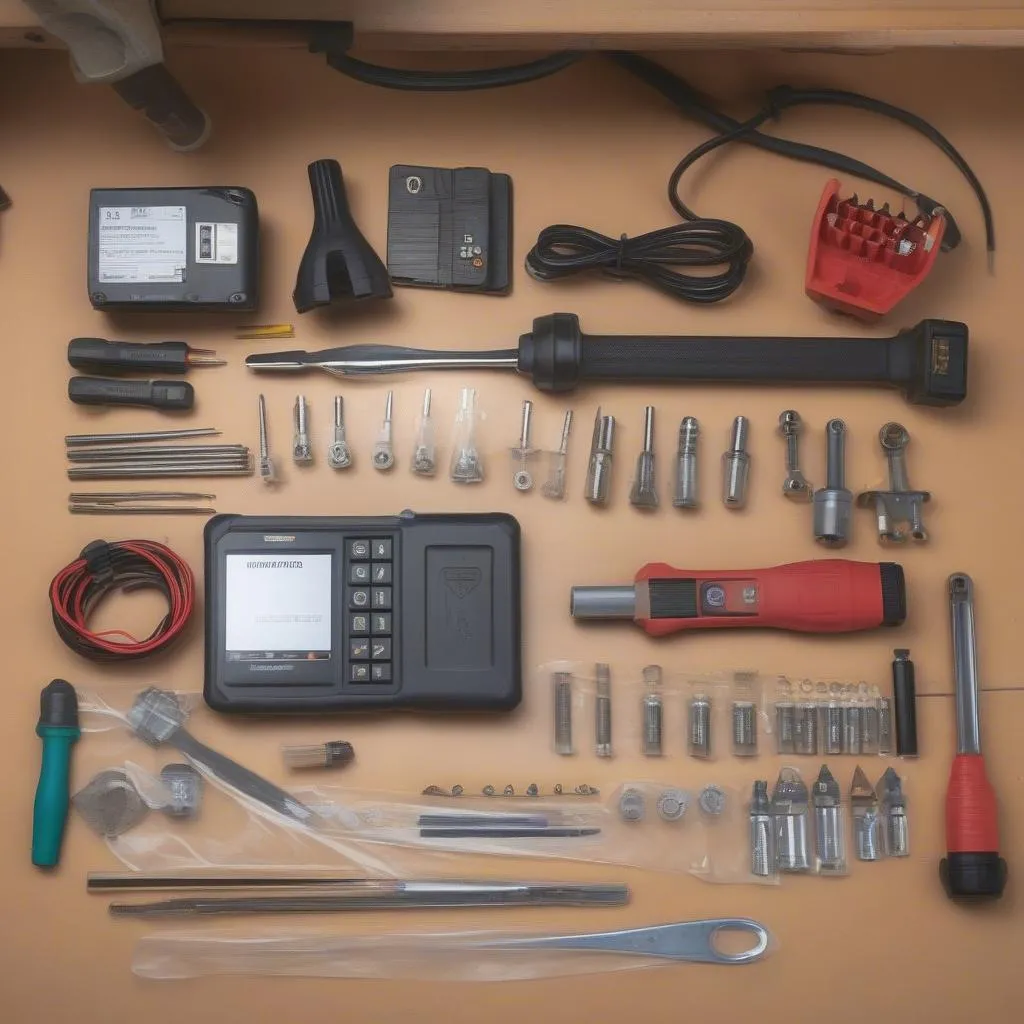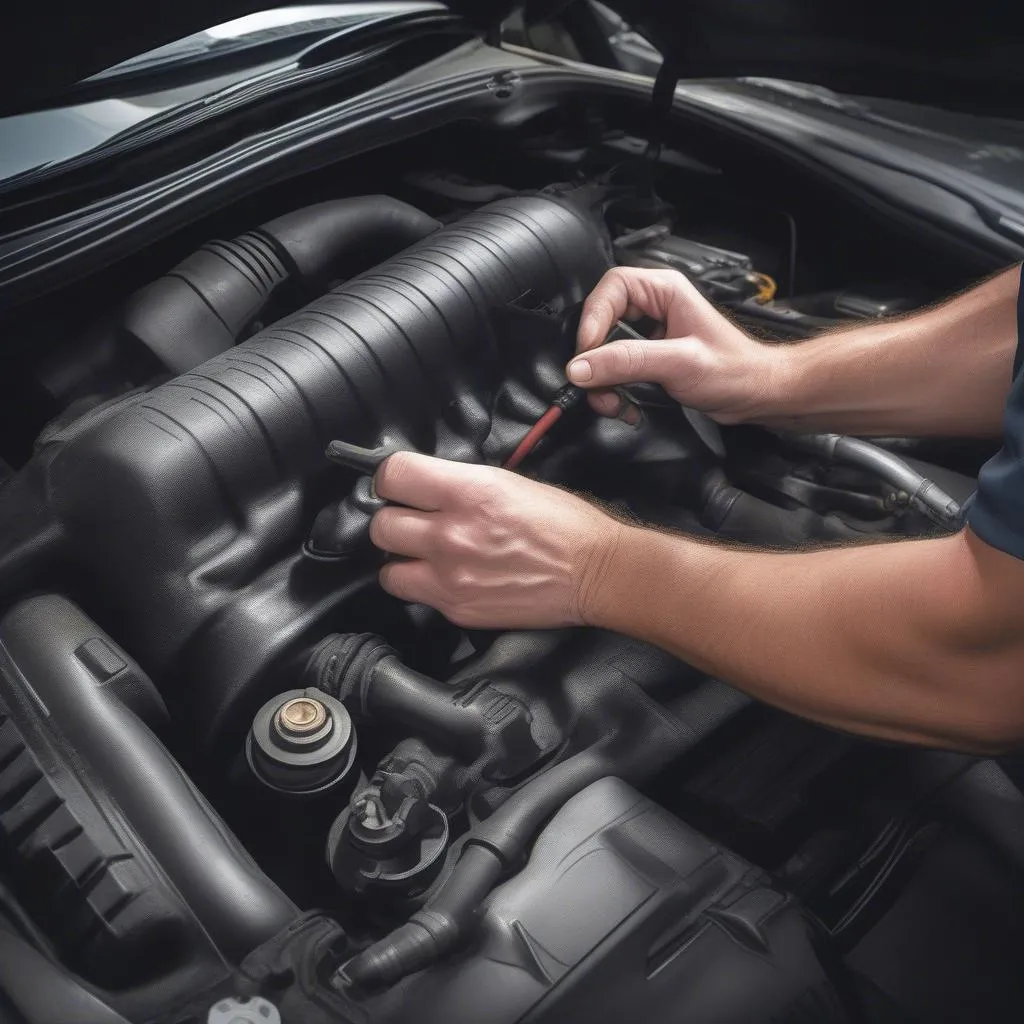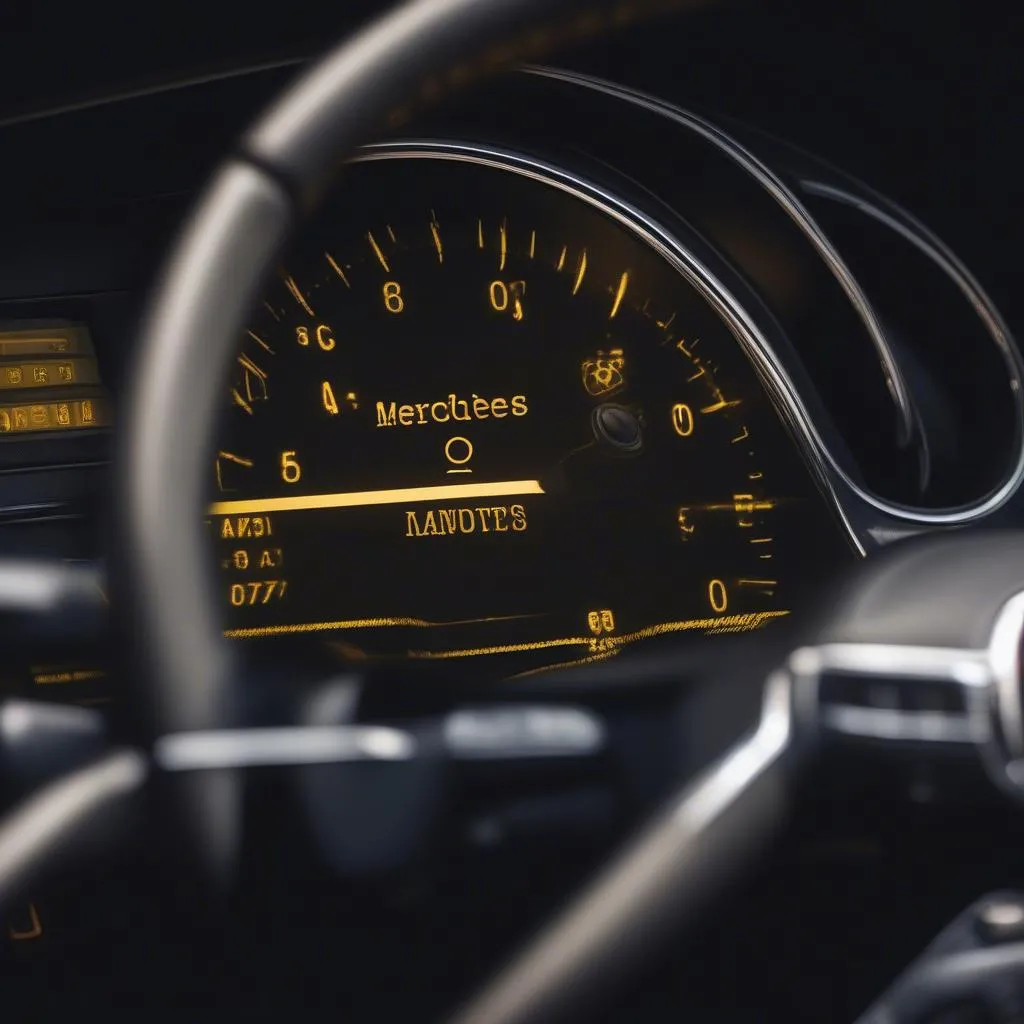The dreaded P1999 code. It’s enough to send shivers down the spine of any Mercedes owner. This code, often accompanied by the ominous “Check Engine Light,” indicates an issue with your vehicle’s secondary air injection system. But don’t panic just yet! This guide will walk you through understanding the P1999 Mercedes code and equip you with the knowledge to address it.
Understanding the P1999 Code
The P1999 code, specifically “P1999 – Secondary Air Injection System Bank 2,” signals a problem with the air injection system on the side of your engine that doesn’t house cylinder #1. This system injects air into the exhaust manifold during cold starts to reduce emissions. When faulty, it can affect your car’s performance and environmental impact.
 Mercedes Check Engine Light
Mercedes Check Engine Light
Identifying the Symptoms
Before diving into repairs, it’s essential to recognize the symptoms that often accompany the P1999 code:
- Illuminated Check Engine Light: The most apparent indicator.
- Rough idling: The engine might shake more than usual when the car is stopped.
- Hesitation during acceleration: You might experience a slight delay or jerkiness when you press the gas pedal.
- Increased emissions: Your vehicle may fail an emissions test.
Gathering Your Tools and Equipment
Before starting any repair, it’s crucial to have the right tools. Here’s a list of what you might need:
- OBD-II Scanner: To read and clear the error code.
- Socket set: To remove and install various components.
- Screwdrivers: For removing clamps and hoses.
- Replacement parts: Depending on the root cause, you might need a new air pump, valves, fuses, or hoses.
 Mechanic Tools for Mercedes Repair
Mechanic Tools for Mercedes Repair
Troubleshooting the P1999 Code
Here’s a step-by-step guide to help you diagnose and potentially fix the P1999 code:
- Check the fuses: Begin with the simplest solution. Locate the fuse box and check the fuse associated with the secondary air injection system. Replace it if blown.
- Inspect the air pump: Listen closely to the air pump when the engine is cold. A loud whining or grinding noise indicates a failing pump that needs replacement.
- Examine the air injection valves: These valves control the airflow. Check for any damage or blockages. You can test them by applying 12 volts directly to see if they click open.
- Inspect the vacuum lines and hoses: Look for any cracks, loose connections, or blockages in the lines connecting the system components.
“A common oversight when diagnosing P1999 is not thoroughly checking the vacuum lines,” says automotive expert, Dr. Emily Carter, author of “Modern Automotive Diagnostics.” “These lines are crucial for proper system function, and even a small leak can trigger the error code.”
 Inspecting Mercedes Vacuum Lines for Leaks
Inspecting Mercedes Vacuum Lines for Leaks
- Check the wiring harness: Ensure that the wiring harness connecting the air injection system components is free of damage, corrosion, or loose connections.
Frequently Asked Questions
Q: Can I continue driving with the P1999 code?
A: While you might not experience immediate driving issues, it’s not recommended to ignore this code. Driving with a faulty secondary air injection system can lead to further damage and potential emissions test failures.
Q: Is the P1999 code difficult to fix myself?
A: The complexity of the repair depends on the root cause. Some fixes, like replacing a fuse, are straightforward. Others, like replacing the air pump, can be more involved and might require professional assistance.
Q: Can an OBD-II scanner help me diagnose the problem?
A: While a basic OBD-II scanner can read and clear the P1999 code, it won’t pinpoint the exact cause. Investing in a more advanced scanner or seeking professional diagnostics can provide more specific information.
Consider CARDIAGTECH’s range of professional-grade OBD-II scanners. These scanners offer in-depth diagnostics, live data streaming, and even repair suggestions, making troubleshooting much easier. You can explore their offerings here: Cardiagtech OBD-II Scanners
Q: How much does it cost to fix the P1999 code?
A: The cost varies greatly depending on the faulty component and labor costs in your area. A simple fuse replacement could be a few dollars, while a new air pump might cost several hundred.
Conclusion
The P1999 Mercedes code, while daunting, is often solvable. By understanding the system, recognizing the symptoms, and following the troubleshooting steps, you can address the issue effectively.
Remember, while tackling this repair yourself can be cost-effective, don’t hesitate to seek professional help if needed. A qualified mechanic can provide expert diagnostics and ensure a proper repair, keeping your Mercedes running smoothly and efficiently.

